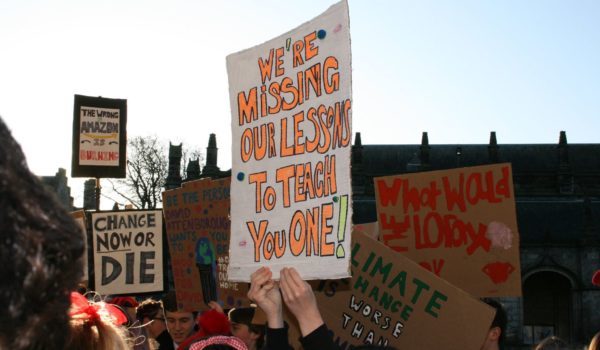On a sunny afternoon in Bristol the statue of Edward Colston, a former slave trader, was torn down by Black Lives Matter protestors amid cheers and jubilation. It was promptly dumped into the River Avon. Whilst many have praised this as a sign of progression and justice, it belies a worrying trend towards an absolute view of history.
There is no defence to be made of Colston’s actions. During his involvement with the Royal African Company over 80,000 slaves were transported of whom around 20,000 died, and Colston must be held at least partially responsible for these atrocities. Whilst we must condemn the slavery and racism of 17th century European society in relation to our own, we should also be careful when judging historical individuals by our own standards. To evaluate the individual, we must judge them on the standards of their society, not our own. To do otherwise is anachronistic.
To provide some historical context, Colston died in 1721. One would have to wait another 60 years for the birth of the abolitionist movement and the emergence of anti-slavery opinions in the public sphere. In fact, the Slave Trade Act was only passed in 1807 – over a century after Colston’s involvement in the Royal African Company. Even countries like France, which had already passed anti-slavery legislation, engaged in the slave trade as late as 1848.
In highlighting this, I am not condoning Colston’s horrific actions, nor I am saying that he is immune to criticism. All this shows is that we must acknowledge the sad reality that if we were born 400 years ago, we would likely share many of his views. Let’s face the facts: a large proportion in that crowd on Sunday would almost certainly have held the same racist opinions as Colston if they had lived in 17th century England, Europe and many other parts of the world. A degree of self-consciousness is required when judging him.
This is reinforced by the fact that endorsement of slavery at this time was not limited to Europe; the Arab slave trade was responsible for the enslavement of 17 million people from the 6th to the 20th century and the Malian Empire (which lasted until 1670) was built on slavery – many benefactors of slavery were Africans themselves. It must be emphasised that this does not negate the barbarism of colonial slavery which enlarged the scale and brutality of the slave trade to unprecedented levels – it merely shows that we take a great leap to assume that we would not have endorsed slavery in Colston’s age. We have as much basis to claim that we are morally superior to Colston because of our anti-slavery convictions as we do to say that we are cleverer than Isaac Newton because we understand evolution.
It would be wrong to conclude from this that we can’t condemn actions of the past. The key is to judge individuals by the standards of their age, not ours. For instance, we can still castigate Hitler because the vast majority in the 1930s would not have approved of the genocidal slaughter of millions. In contrast, there was nothing remarkable about Colston’s views on slavery in 17th century England. He was a product of his time, just as we are.
This is not to say that Colston was a good man, nor that he deserved a statue in the first place. All it means is that he is a more complex character than many would portray him. David Olusoga exemplified the flaws of the rationale behind Sunday’s action when he declared that Colston had no redeeming features, concluding “he’s not virtuous, he’s a killer”. Although the truth in what Olusoga says it is undeniable, this oversimplified view is unjustified. Consider the description of Colston by David Hughson in 1808 as “the great benefactor of the city of Bristol, who, in his lifetime, expended more than 70,000L. [£] in charitable institutions” and by other contemporaries as “the brightest Example of Christian Liberality that this Age has produced for the extensiveness of his Charities.”
It must be stressed that Colston’s acts of generosity, such as founding schools, almshouses and funding hospitals and churches, do not balance out the immense suffering and pain he caused. Nevertheless, it is misleading to turn a blind eye to the many thousands of disadvantaged Bristolians that Colston benefitted, just as it is bigoted to hide the tens of thousands of lives he destroyed.
In reality, all people are nuanced and no historical figure would meet the moral standards of the 21st century. Churchill is a common example, as is Gandhi, both of whom held racist views which we would today find abhorrent. Mandela, one of the greatest peacemakers in history, was part of organisations recognised by Thatcher and Reagan as terrorist. Even Charles II has a statue in Soho square, and it was only with his approval that the participation of men like Colston in the slave trade could occur, making him complicit in the very same crimes as Colston – yet there are no cheering crowds tearing down his statue. Obviously Colston and Gandhi are not a like-for-like comparison; the crimes of Colston are far more serious than the more unsavoury elements of Gandhi’s character. The point is that we must abandon this Manichean approach which judges the past in absolute terms, describing men such as Colston as simply evil, whilst ignoring the flaws of others to confer an almost saintly status upon them. The scathing verdict of social media that Colston deserves to go down in history as an “evil mass murderer” who should rot at the bottom of the river reveals an unawareness of the terrifying fact that the 17th century was a time when ordinary people could commit what amount to unspeakable horrors in the modern world.
Colston was a complex character. Was he responsible for the misery of tens of thousands? Yes. Did he improve the quality of life of many thousands in Bristol at his own personal expense? Yes. Does he deserve to be memorialised in a statue today? Probably not. But should his statue have been torn down in such a way? Probably not. Keir Starmer was right when he condemned Sunday’s actions as “completely wrong”, whilst conceding that the statue should have been brought down earlier with broader consent and put in a museum. At the very least, Bristol City Council should have amended the plaque long ago to provide a fuller picture of the man.
The fundamental issue though is not the act of toppling the statue itself. Statues of controversial figures have fallen before and will fall again. The real problem is the mindset which looks at history and is so quick to point the finger and claim the moral higher ground. Maybe before tearing down the statue it would have been constructive to remember that old adage: “Let he who is without sin cast the first stone”. We should examine the inequalities and injustices of our society instead of focussing our energies on figures like Colston. Resolving historic injustices by caricaturing past individuals is not the way forward.
Black Lives Matter is a movement with genuine grievances at its core and it has done great things already, such as petitioning to educate schoolchildren on colonialism. But given that more people are enslaved today than ever before in human history (according to the International Justice Mission) and that racism persists to this day, are we in the best position to portray Colston as a monster in relation to ourselves? As Trevor Phillips, a black political commentator said, “Dancing around the symbolic corpse of a long-dead slave trader […] will never bring about meaningful change.” Channelling our anger at racial injustice through this form of summary execution is unproductive and deeply hubristic.
Colston is a reminder of what happens when we don’t question the accepted wisdom of their age – a lesson which we would do well to heed at a time when, thanks to the comforting echo chamber of social media, it is far too easy to follow the crowd and ignore dissenting voices.









Amanda Rigby On 13/06/2020 at 10:51
Very sensible perspective. Thank you.
Indeed, future generations may well feel justified in pulling down any statues of us, given that we are so brazenly complicit in slavery now.
According to the U.N.’s International Labor Organization (ILO) there are more than three times as many people in forced servitude today as were captured and sold during the 350-year span of the transatlantic slave trade.
Wow! That is immense. And what is each of us doing about it?
We are perhaps more complicit than our forebears, in fact. Because we can see the video footage and we can read the witness statements. We cannot say that we did not know. And, unlike our forebears, we cannot begin to claim that we did not understand it to be wrong.
But it takes courage to deal with the corrupt systems and organised crime that enable slavery. And it takes effort even to avoid investments or products that benefit from such exploitation somewhere down the line. By contrast, it takes little courage to be part of a big group toppling an unresisting statue in a country that is blessed to be policed by consent.
I like your suggestion that Bristol City Council should have amended the plaque to provide a fuller picture of Colston. Perhaps the new text should be engraved into a mirror.
Tony Payne On 14/06/2020 at 11:27
Both the original text and the reply above are carefully thought out and rightly (for me) remind us of our flaws and human mixes of good and bad, especially in uncomfortable facts that complicate human issues. Anachronism doesn’t enlighten; information does. It’s authorities’ lazy unquestioning acceptances and refusals to listen/engage with difficult issues that too often cause violent extremism by people who feel unheard. Don’t erase history; learn better from it. Archive the statues and inform carefully.